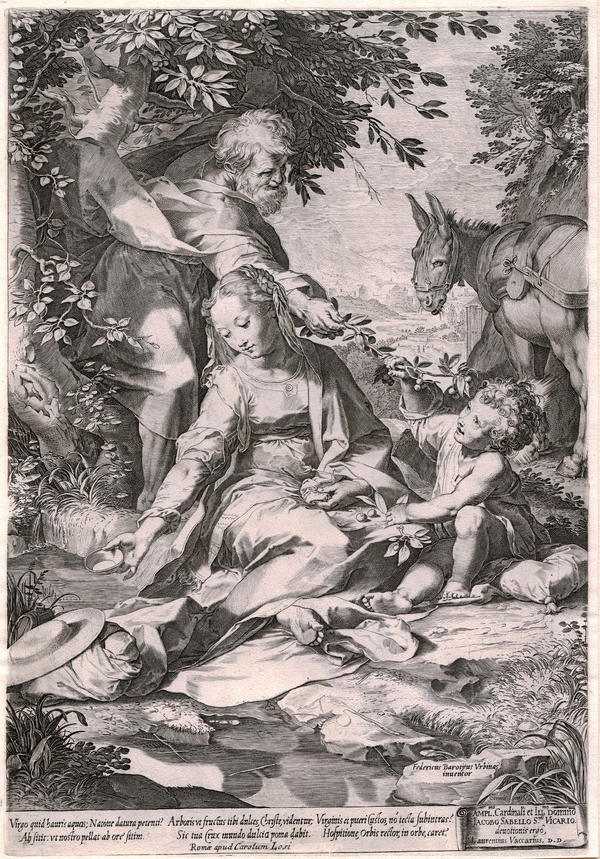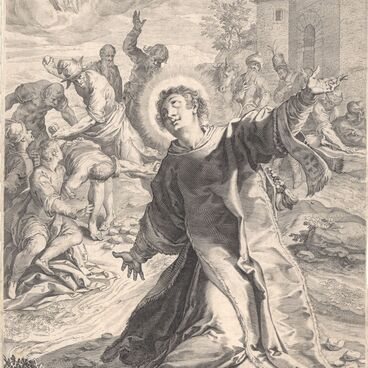The Rest on the Return from Egypt is the work of the Dutch engraver and draughtsman Cornelis Cort after the drawing by Federico Baroccio. It is made with a graver tool on a copper plate and printed on the expensive laid paper made of linen fibers and cellulose pulp. This engraving has four states, or versions, with varying corrections. The Irbit State Museum of Fine Arts has the print of the fourth and last state.
Cornelis Cort did this work in 1575. By that time, he had already become an important influence in the European burin engraving. Cort and his pupils and followers chose large surface plates and used a free stroke, left a lot of air and created a painting effect with the help of chiaroscuro and fine lines.
Cornelis Cort did this work in 1575. By that time, he had already become an important influence in the European burin engraving. Cort and his pupils and followers chose large surface plates and used a free stroke, left a lot of air and created a painting effect with the help of chiaroscuro and fine lines.



